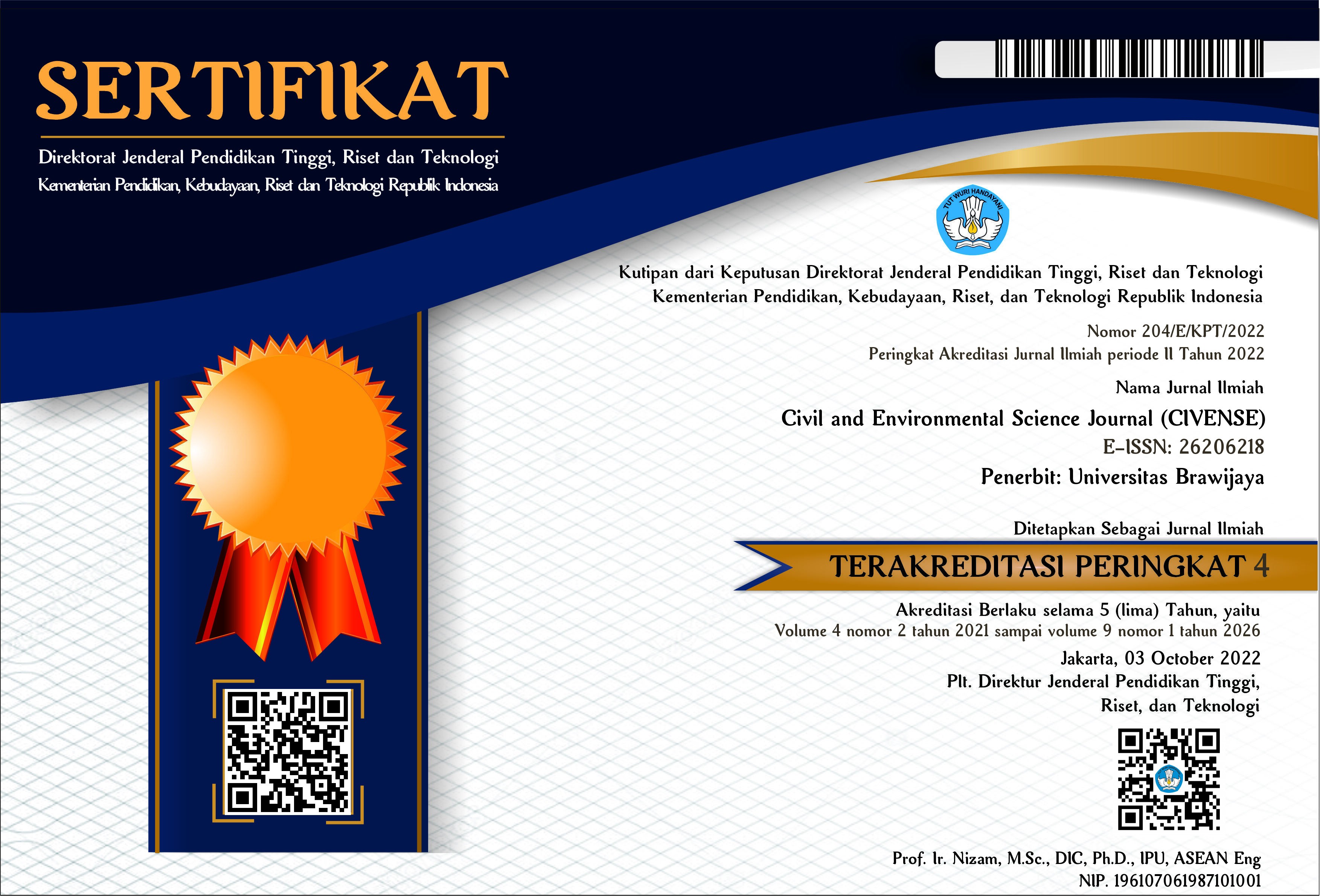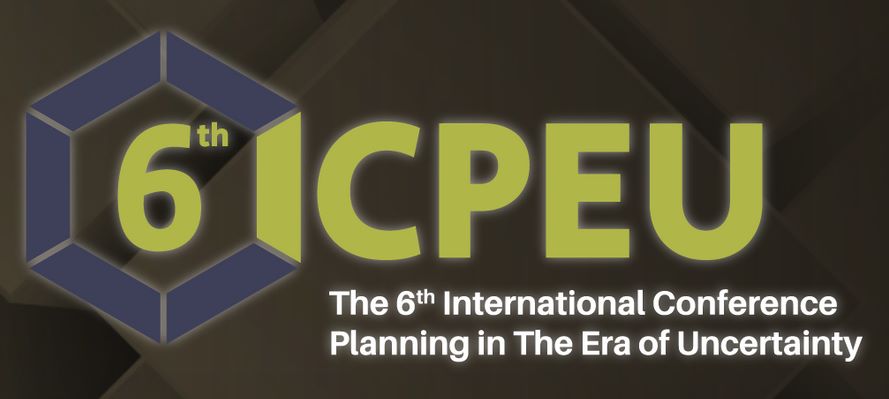The analysis of rainwater harvesting carrying capacity on water domestic supply for dwelling areas in Indonesia
DOI:
https://doi.org/10.21776/ub.civense.2019.00201.6Keywords:
RWH, carrying capacity, facility, houseAbstract
This research aims to promote the method to design rainwater harvesting facilities in Indonesian dwelling areas. The estimation of rainwater harvesting (RWH) carrying capacity is undertaken using a simulation involving rainfall, inflow, and outflow data. The research was undertaken in Natar sub-district, Southern Lampung, Indonesia. Daily rainfall data from Branti Airport from 2013 to 2017 are used for the simulation. Research shows that houses in the study area can supply approximately 35% of their domestic water needs by applying RWH. This means that the support capacity of rainwater harvesting in the study area revolves around that value. The research also shows intensity of rainfall will greatly affect the carrying capacity of RWH. In addition to rainfall, the economic ability of a family plays an important role in planning the dimensions of a RWH facility in a house. Finally, maintenance of RWH facilities on a regular basis is important to ensure the operational effectiveness of RWH.
References
United Nation Department of Economic and Social Affair (UNDESA). 2014. Water scarcity. United Nation Department of Economic and Social Affair (UNDESA) article. Website: http://www.un.org/waterforlifedecade/scarcity.shtml. [Accesssed Jan 25, 2019]
British Broadcasting Coorporation (BBC). 2018. Water scarcity threatens 11 cities in the world, Jakarta one of them. Website: https://internasional.kompas.com/read/2018/02/12/16071851/kelangkaan-air-ancam-11-city-in-the-world-jakarta-one only? Page = all. [Accesssed Jan 27, 2019].
Khastagir, A. and Jayasuriya, N. 2010. Optimal sizing of rain water tanks for domestic water conservation. Journal of Hydrology, 381(3–4), pp. 181–188.
Kahinda, J.M., Taigbenu, A.E. and Boroto, R.J. 2010. Domestic rainwater harvesting as an adaptation measure to climate change in South Africa. Physics and Chemistry of the Earth, Vol. 32(15-18), pp. 1050–1057.
Susilo, G.E., Yamamoto, K. and Imai, T. 2011. The identification of rainwater harvesting potency in supporting freshwater availability under the effect of El Nino. Proceeding IWA – ASPIRE International Conference, October 2011, Tokyo – Japan.
Susilo, G.E. 2015. Experience in rainwater harvesting application at household scale in Bandar Lampung, Indonesia. Proceeding of The 1st Young Scientist International Conference of Water Resources Development and Environmental Protection, Malang, 5-7 June 2015
Susilo, G.E., Efendi, R., Desmawati, E. and Nalaralagi, A. 2017. Promoting rainwater harvesting as an alternative of freshwater source for public sanitation. Journal of Asian Institute of Low Carbon Design (2017)
Fewkes, A. 1999. The use of rainwater for WC flushing: the field testing of a collection system. Building and Environment, 34(6), 765–772.
Fair, G.M., Geyer, J.C. and Okun, D.A. 1971. Elements of Water Supply and Wastewater Disposal. Second Edition, John Wiley & Sons, Inc. and Toppan Company, Ltd., New York.
Poedjiastoeti, H. and Syahputra, B. 2006. Determination of the maximum peak hour and daily maximums on the domestic water use pattern in Kalasan, Sleman, Yogyakarta. Proceeding of Lecturer Research, Research Institute of Sultan Agung University, Yogyakarta, Indonesia.
Downloads
Published
How to Cite
Issue
Section
License
Copyright (c) 2019 Civil and Environmental Science Journal

This work is licensed under a Creative Commons Attribution-NonCommercial 4.0 International License.
Authors who publish with this journal agree to the following terms:
Authors retain copyright and grant the journal right of first publication with the work simultaneously licensed under a Attribution-NonCommercial 4.0 International License that allows others to share the work with an acknowledgement of the work's authorship and initial publication in this journal.
Authors are able to enter into separate, additional contractual arrangements for the non-exclusive distribution of the journal's published version of the work (e.g., post it to an institutional repository or publish it in a book), with an acknowledgement of its initial publication in this journal.
Authors are permitted and encouraged to post their work online (e.g., in institutional repositories or on their website) prior to and during the submission process, as it can lead to productive exchanges, as well as earlier and greater citation of published work (See the Effect of Open Access).














